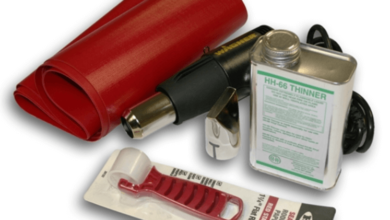Flex Pipe Repair: Ensuring the Longevity of Your Exhaust System

When it comes to your vehicle’s exhaust system, is the flex pipe. The flex pipe is responsible for absorbing vibrations, reducing noise, and most importantly, accommodating the movement of the engine and exhaust system. This critical part, leading to leaks, increased noise levels, and even reduced engine performance. In this article, we will delve into the world of flex pipe repair, exploring why it’s essential, how to identify issues, and the steps to effectively fix them.
Understanding the Flex Pipe
What is a Flex Pipe?
The flex pipe, also known as a flex joint or exhaust bellows, is a flexible section of the exhaust system that is typically made of stainless steel. It is strategically placed between the exhaust manifold and the catalytic converter or muffler. Its flexibility allows it to absorb vibrations and movements, preventing the exhaust system from breaking due to stress.
Importance of a Healthy Flex Pipe
A healthy flex pipe is vital for several reasons:
- Vibration Absorption: Flex pipes absorb vibrations, preventing them from reaching the rest of the exhaust system, which can lead to damage.
- Emission Control: A properly functioning flex pipe ensures that the exhaust gases are efficiently directed towards the catalytic converter, aiding in emission control.
Identifying Flex Pipe Issues
Signs of a Damaged Flex Pipe
Recognizing the early signs of a damaged flex pipe can save you from costly repairs down the road. Look out for:
- Increased Noise: A sudden increase in exhaust noise is a clear indicator of a potential issue.
- Exhaust Leaks: Visible leaks or hissing sounds near the flex pipe are red flags.
- Reduced Fuel Efficiency: A damaged flex pipe can affect engine performance and fuel efficiency.
Flex Pipe Repair Options
DIY Repair vs. Professional Help
When it comes to repairing a damaged flex pipe, you have two primary options:
- DIY Repair: You can attempt a DIY repair if you have mechanical skills and access to the necessary tools.
- Professional Help: For complex or severe damage, it’s best to seek the expertise of a professional mechanic.
DIY Flex Pipe Repair Steps
If you decide to tackle the repair yourself, follow these steps:
- Safety First: Ensure your vehicle is on a level surface, and you have the necessary safety gear.
- Identify the Damage: Locate the damaged area of the flex pipe.
- Cut and Remove: Cut out the damaged section using a hacksaw or reciprocating saw.
- Install a Replacement: Attach a new flex pipe section using clamps or welding, depending on your skill level.
- Test for Leaks: Start your vehicle and check for any exhaust leaks. Read more…
Conclusion
Your vehicle’s exhaust system is critical for its overall performance and environmental impact. Though often overlooked, the flex pipe plays a significant role in ensuring everything runs smoothly. Regular inspections and timely repairs can extend the life of your exhaust system and keep your vehicle running efficiently.
Remember, if you’re unsure about repairing your flex pipe repair, it’s always best to consult with a professional mechanic to ensure a safe and effective solution.
FAQs
- How long does a flex pipe typically last?
- Flex pipes can last anywhere from 5 to 10 years, depending on driving conditions and maintenance.
- Can I drive with a damaged flex pipe?
- It’s not recommended, as a damaged flex pipe further damage to the exhaust system.
- What causes flex pipe damage?
- Flex pipe damage is often caused by exposure to harsh weather conditions, road salt, and wear and tear over time.
- Is a damaged flex pipe dangerous?
- While not immediately dangerous, a damaged flex pipe can lead to more significant exhaust system issues if not addressed promptly.
- How much does flex pipe repair cost?
- The cost of flex pipe repair varies depending on the extent of the damage help.






